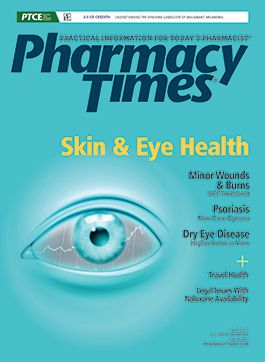Publication
Article
Pharmacy Times
FDA Report Recaps Progress, Goals in Generic Drug Approvals
Author(s):
The FDA’s Office of Generic Drugs (OGD) recently released its 2016 Annual Report, which highlights the agency’s accomplishments of the past year and provides insight into the office’s performance.
The FDA’s Office of Generic Drugs (OGD) recently released its 2016 Annual Report, which highlights the agency’s accomplishments of the past year and provides insight into the office’s performance.
According to the report, the FDA met Generic Drug User Fee Act (GDUFA) goals established by the FDA Safety and Innovation Act of 2012.1 These goals included issuing first action on 90% of the 2866 abbreviated new drug applications (ANDAs) and 1873 postapproval studies (PASs) in process, prior to GDUFA enactment in October 2012, to clean up its GDUFA backlog. Not only did the FDA meet its goal, but it surpassed requirement by December 31, taking first action on 95% of ANDAs and 93% of PASs.
The FDA also approved a record-setting 630 ANDAs and tentatively approved 183, which is the highest number of generic drug approvals and tentative drug approvals yet ever in one year. The agency approved 73 first generic drugs, which introduce an alternative for a brand name product where there was previously none.
“It is exciting to see the number of approvals and tentative approvals continuing to rise,” Kathleen Uhl, MD, the director of the OGD, said in a statement. “But our main focus is always to ensure the safety, effectiveness, and quality of FDA-approved drugs.” She also noted that FDA-approved generic drugs make up 89% of prescriptions dispensed in the United States. Some significant first generic approvals of 2016 were highlighted in the report; these include dofetilide for atrial fibrillation, mometasone furoate for nasal symptoms of seasonal allergies, and olmesartan medoxomil for high blood pressure. First approvals were also granted to generic versions of commonly used drugs such as Benicar, Viagra, Crestor, and Tamiflu.
“First generics, in particular, help reduce the cost of high-priced brand name drugs,” Uhl said in the report. “Multiple generic versions of brand name drugs are also important contributors to price competition, leading to more affordable drugs.”
Although the FDA granted approvals at its fastest rate yet, some legislators argue that the process should be quicker, given concerns about rising drug prices. Uhl noted in an FDA Voice blog that the GDUFA, which is up for renewal in October 2017, played a significant role in the FDA’s improved performance because it has challenged the OGD to meet a variety of commitments while maintaining or improving the quality of the review process.2
The GDUFA regulatory science priorities also worked towards increasing generic drug development by helping the industry develop validated scientific methods for demonstrating and ensuring bioequivalence to the brand name counterpart, which Uhl says facilitates generic drug product development. According to the report, the OGD has also begun developing collaborations with international generic drug organizations to improve ANDAs and provide greater consistency in the quality of generic drug products developed internationally.
References
- FDA Office of Generic Drugs. Office of Generic Drugs 2016 OGD Annual Report. 2017:1-19. Available at: https://www.fda.gov/downloads/Drugs/DevelopmentApprovalProcess/HowDrugsareDevelopedandApproved/ApprovalApplications/AbbreviatedNewDrugApplicationANDAGenerics/UCM542929.pdf. Accessed April 5, 2017.
- Uhl K. 2016: A record-setting year for generic drugs. FDA Voice. 2017. Available at: https://blogs.fda.gov/fdavoice/index.php/2017/02/2016-a-record-setting-year-for-generic-drugs/. Accessed April 5, 2017.







